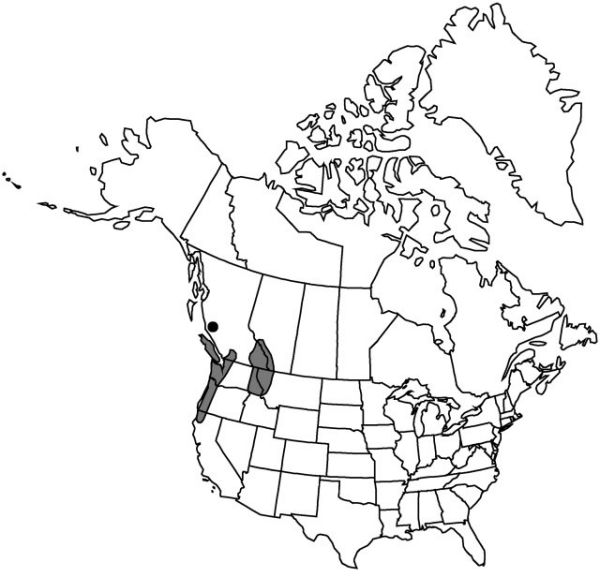Stenanthium occidentale
Proc. Amer. Acad. Arts 8: 405. 1873.
Bulbs ovoid, 2–4 cm. Stems 1.5–4.5(–6) dm. Leaves several, mostly proximal; blade linear to oblanceolate, weakly keeled, 15–30 × 0.6–2.5 cm, apex acute. Inflorescences racemose and 3–6-flowered or paniculate and to 25-flowered; bracts lanceolate, 6–10 mm. Flowers drooping; perianth narrowly tubular-campanulate; tepals recurved distally, greenish to brownish purple, oblong-lanceolate, 10–20 mm, apex gradually acuminate; tepal glands present; stamens 7–8 mm; filaments subequal; pedicel ascending to erect, 1–3 cm. Capsules lanceoloid, 12–16 mm including slender style beaks, apex gradually acuminate. Seeds brownish black, narrowly oblong, 3–4 mm. 2n = 16.
Phenology: Flowering late spring–mid summer.
Habitat: Wet cliffs, rocky crevices, montane meadows, mossy scree
Elevation: 0–2500 m
Distribution

Alta., B.C., Calif., Idaho, Mont., Oreg., Wash.
Discussion
Stenanthium occidentale is similar to a circum-northern Pacific and Sakhalin Island endemic, S. sachalinense F. Schmidt, which may be conspecific (S. M. Kupchan et al. 1961; F. H. Utech 1987).
Selected References
None.